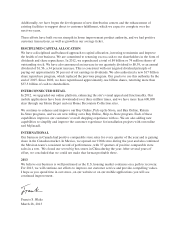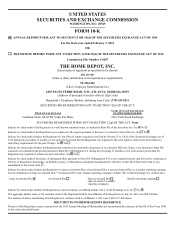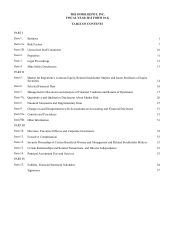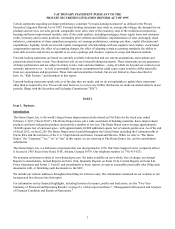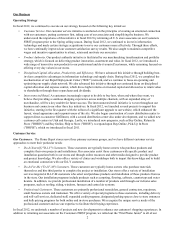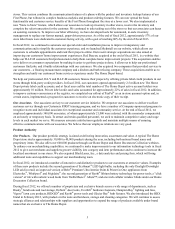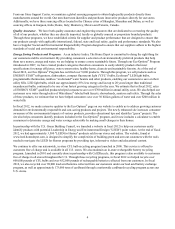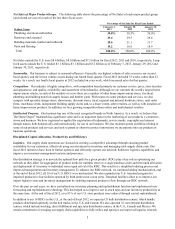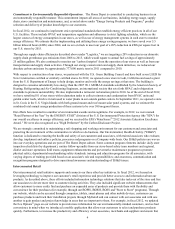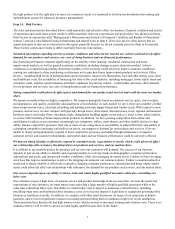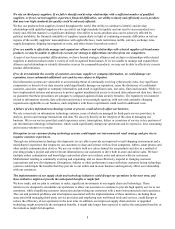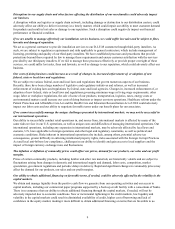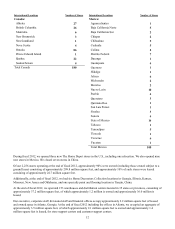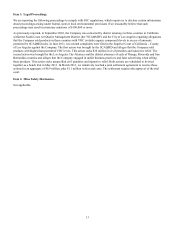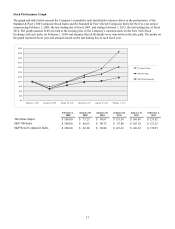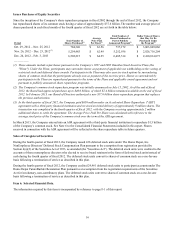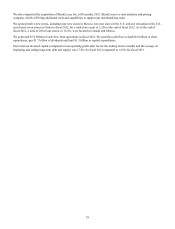Home Depot 2012 Annual Report Download - page 14
Download and view the complete annual report
Please find page 14 of the 2012 Home Depot annual report below. You can navigate through the pages in the report by either clicking on the pages listed below, or by using the keyword search tool below to find specific information within the annual report.
8
We rely on third party suppliers. If we fail to identify and develop relationships with a sufficient number of qualified
suppliers, or if our current suppliers experience financial difficulties, our ability to timely and efficiently access products
that meet our high standards for quality could be adversely affected.
We buy our products from suppliers located throughout the world. Our ability to continue to identify and develop
relationships with qualified suppliers who can satisfy our high standards for quality and our need to access products in a
timely and efficient manner is a significant challenge. Our ability to access products also can be adversely affected by
political instability, the financial instability of suppliers (particularly in light of continuing economic difficulties in various
regions of the world), suppliers’ noncompliance with applicable laws, trade restrictions, tariffs, currency exchange rates,
supply disruptions, shipping interruptions or costs, and other factors beyond our control.
If we are unable to effectively manage and expand our alliances and relationships with selected suppliers of brand name
products, we may be unable to effectively execute our strategy to differentiate ourselves from our competitors.
As part of our focus on product differentiation, we have formed strategic alliances and exclusive relationships with selected
suppliers to market products under a variety of well-recognized brand names. If we are unable to manage and expand these
alliances and relationships or identify alternative sources for comparable products, we may not be able to effectively execute
product differentiation.
If we do not maintain the security of customer, associate, supplier or company information, we could damage our
reputation, incur substantial additional costs and become subject to litigation.
Our information systems are vulnerable to an increasing threat of continually evolving cybersecurity risks. Any significant
compromise or breach of our data security could significantly damage our reputation, cause the disclosure of confidential
customer, associate, supplier or company information, and result in significant costs, lost sales, fines and lawsuits. While we
have implemented systems and processes to protect against unauthorized access to secured data and prevent data loss, there is
no guarantee that these procedures are adequate to safeguard against all data security breaches. The regulatory environment
related to information security, data collection and privacy is increasingly rigorous, with new and constantly changing
requirements applicable to our business, and compliance with those requirements could result in additional costs.
A failure of a key information technology system or process could adversely affect our business.
We rely extensively on information technology systems, some of which are managed by third-party service providers, to
analyze, process and manage transactions and data. We also rely heavily on the integrity of this data in managing our
business. We or our service providers could experience errors, interruptions, delays or cessations of service in key portions of
our information technology infrastructure, which could significantly disrupt our operations and be expensive, time consuming
and resource-intensive to remedy.
Disruptions in our customer-facing technology systems could impair our interconnected retail strategy and give rise to
negative customer experiences.
Through our information technology developments, we are able to provide an improved overall shopping environment and a
multichannel experience that empowers our customers to shop and interact with us from computers, tablets, smart phones and
other mobile communication devices. We use our website both as a sales channel for our products and also as a method of
providing product, project and other relevant information to our customers to drive both in-store and online sales. We have
multiple online communities and knowledge centers that allow us to inform, assist and interact with our customers.
Multichannel retailing is continually evolving and expanding, and we must effectively respond to changing customer
expectations and new developments. Disruptions, failures or other performance issues with these customer-facing technology
systems could impair the benefits that they provide to our online and in-store business and negatively affect our relationship
with our customers.
The implementation of our supply chain and technology initiatives could disrupt our operations in the near term, and
these initiatives might not provide the anticipated benefits or might fail.
We have made, and we plan to continue to make, significant investments in our supply chain and technology. These
initiatives are designed to streamline our operations to allow our associates to continue to provide high quality service to our
customers, while simplifying customer interaction and providing our customers with a more interconnected retail experience.
The cost and potential problems and interruptions associated with the implementation of these initiatives, including those
associated with managing third-party service providers and employing new web-based tools and services, could disrupt or
reduce the efficiency of our operations in the near term. In addition, our improved supply chain and new or upgraded
technology might not provide the anticipated benefits, it might take longer than expected to realize the anticipated benefits, or
the initiatives might fail altogether.


